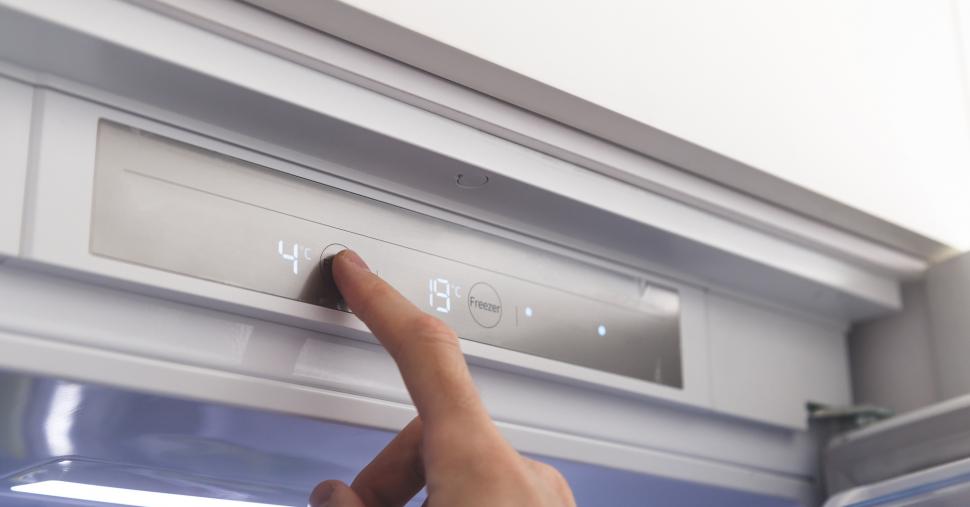You’re forgiven if refrigerators aren’t the first objects that pop into your mind when someone mentions a heat pump, but essentially the technology is the same. We have already discussed the pros and cons of heat pumps in other articles, as well as exploring alternatives such as fuel cells and hydrogen boilers, but exactly how do heat pumps work, and how is the same technology used in a refrigeration device of any use in an appliance designed to produce heat?
First of all, it all comes down to good old thermodynamics: the laws that have us screaming, ‘but cold is simply the absence of heat,’ at people who tell us we are letting the cold in. The first law of thermodynamics is that energy cannot be created or destroyed; it simply transforms from one type to another. Heat is the flow of thermal energy, transferred between objects as per this law; hot object particles flow to the cooler object particles, thereby increasing the temperature of the cooler object. This transference of energy is the very core of heat pump technology.
A heat pump, rather than transferring energy from hot objects to cold, flows from cold to hot. This ‘backwards’ transfer does not occur in nature (unlike the process of heat transfer, seen when, for example, we place a hot cup of tea next to a glass of cold water; the former transferring heat to the latter), and to achieve the desired outcome, we need to interfere with it. And so we do, by adding an input of work in the form of a mechanical heat pump system.
So how does a heat pump utilise the same system as a refrigerator? Surely, moving energy from a chilly exterior to a warm interior is as far removed from cooling down a warm interior as you could ever get? Well, you’d be wrong. Sorry. In the case of refrigerators, we are still moving warm air to cold… because we can’t get around the (cold) hard fact that cold is merely an absence of heat.
Essentially, we need to disregard whether the desired outcome is hot or cold; the key is in the process applied to achieve this. To provide heat, the input of work (heat pump) extracts air from the exterior and transfers it to a refrigeration coolant. The coolant is compressed, increasing its temperature before moving to the indoor component of the heat pump. This component passes air across the heated coolant, which increases the air flow temperature, pumping lovely, warm air into your chilly home (interior), increasing the ambient temperature.
A refrigeration cycle is identical to that of the basic heat pump cycle, but instead it moves warm, ambient air from the refrigerator (interior) to the air (exterior). If you stand next to your fridge on a warm summer’s day, you’ll feel this process as heat emanating from the coils on the back of the fridge. These condenser coils are a crucial part of the operation, being the place where the high temperature refrigerant expands and comes into contact with the cooler exterior air. The temperature of the refrigerant is cooled via thermal transfer of heat into the exterior, and our cycle begins again.
The reason that heat pumps are technically more efficient than traditional forms of heating is all in this equation: Qh = Qc + W (hot reservoir is equal to cold reservoir plus work). Rather than burning fuel to create heat, we are utilising free resources, in this case the outside air (Qc), adding an input of work (W). Instead of paying for fuel, as in conventional systems, we pay only for the work input, essentially getting out more than we put in. From a cost perspective, this does fall down if running the work input is more expensive than burning fuel but, with heat pumps, this is likely a semantic that will be ironed out in time.
However, despite your deeper understanding of thermal transfer, when someone grumbles at you to close the door as ‘it feels like a refrigerator in here,’ they probably aren’t inviting you to explain the impossibility of this statement. We suggest the cool thing to do is to simply close the door and head on your way.
PA Hilton’s Energy Study Module is designed by engineers for engineers. Energy study is a fundamental learning aspect for both first and second-year engineering students. Our energy study units allow the study of difficult principles, enabling delivery of learning in a clear, comprehensive and practical way, increasing student participation and satisfaction.
P.A.Hilton products allow students to gain experience of energy conversion, process/ cycle efficiencies and form a solid understanding of the key principles involved in energy study.
